On the track of PG106 with David Roberts
Many of the stories of Allied soldiers , who had been killed with the partisans in the mountains of Piemonte and were buried in the Milan CWGC Cemetery, had involved a stay on the rice- growing plains around Vercelli. Typically the non commissioned and other rank prisoners taken by the Germans and Italians in the Western Desert, were sent through a variety of holding camps in the desert and transported by ship to Southern Italy. By 1943, Australian and New Zealand other ranks were concentrated at Campo PG57 at Gruppignano , near Udine. By April 1943, with so many men either away at the front or imprisoned by the Allies, the Italians were facing agricultural labour shortages and began to send POWS to a newly established Camp PG106 in Vercelli. In fact, PG106 was not one single POW Camp, but a series of between 20 and 30 labour detachments based on farms in the rice growing area around Vercelli. Each work detachment consisted of around 50 to 100 men, based at some of the larger estates, from these smaller detachments were then sent out to individual farms in the area. Most ANZAC, British and South African prisoners, were still at the camps when the Italians signed the Armistice with the Allies on 8 September 1943.
Having read so much about the area, I thought it would be interesting to take a look. During the lockdowns, I had started producing some decent risotto, so was also wanted to learn a bit more about Italian rice cultivation and hopefully buy some rice at source. I set off by train from Milano Centrale, and after an uneventful journey of an hour and a half arrived at the station of Tronzano Vercellese, which appeared from the map to be one of the more convenient stations to access the rice fields, and some of the former work camps or at least those within a 5 or 6km radius. and which was near to where several of the workcamps were located. I had booked accommodation in Crova, which seemed to be a promising location with many of the sites, I was interested in seeing in a 5 km radius. Crova turned out to be a 3km walk from the station at Tronzano. Apparently, there is a bus, but the chances of it turning up on a Sunday were not promising, so I set off walking. Crova is a small village strung out along the SP 18. Honestly, there is not much there. I think I found the only accommodation there which was an Airbnb , which fortunately was above the only restaurant in town. There was a church, a pharmacy, and a post office and that’s about it. The village is dominated at one end by a large rice factory. On a Sunday, it was almost completely deserted.

1.Crova- a "one horse town" in the rice fields of Vercelli
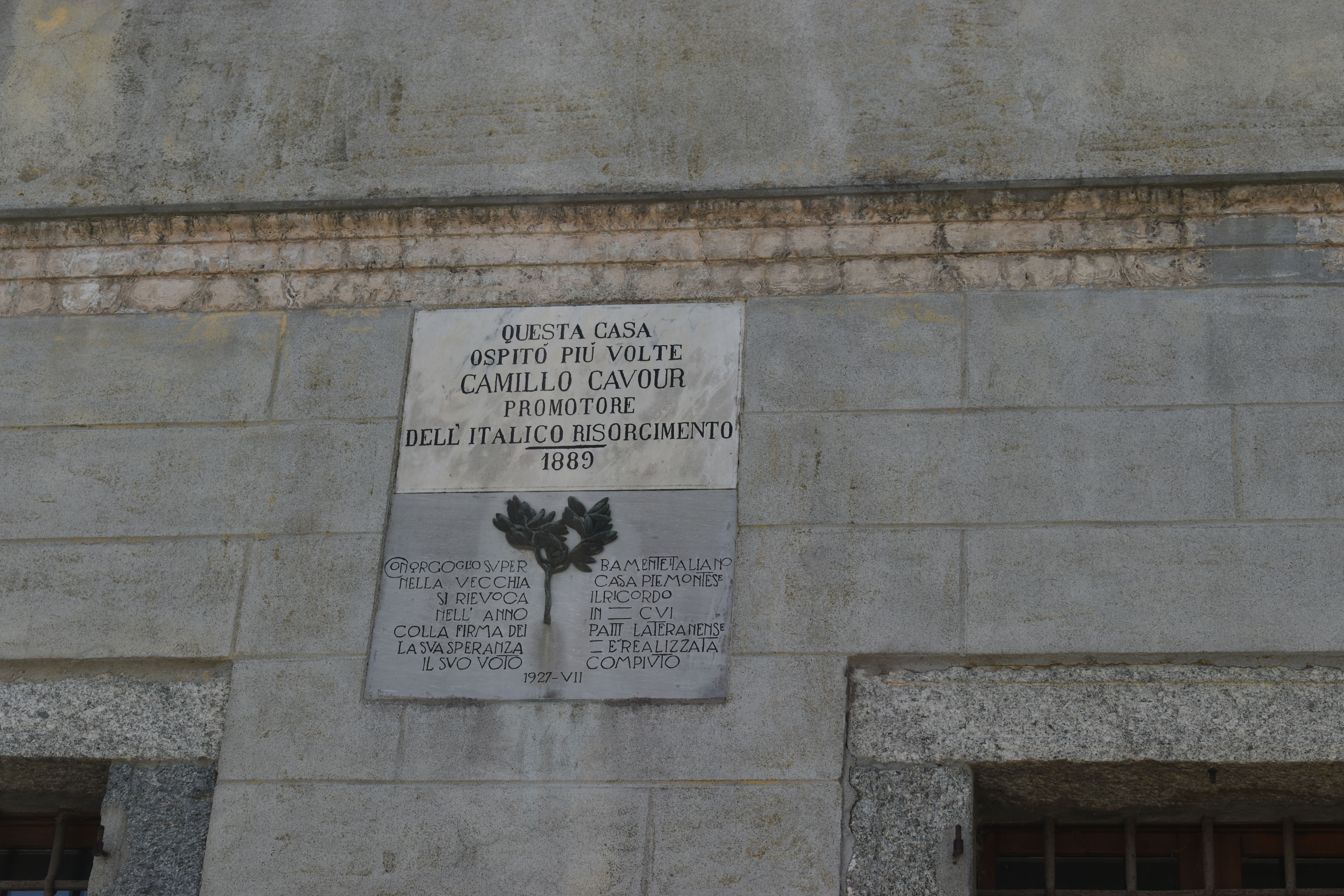
2. However Count Cavour did stay there a few times
First a word about rice. Italy is Europe’s largest rice producer. Quite when the Italians started growing rice on a large scale is obscure, it probably arrived from the Middle East. Up until the medieval period, rice in Europe, was a niche product mainly used for medicinal purposes, for infusions to cure stomach aches and other ailments. It seems to haven classified as a spice, rather than food. An edict from the Excise House in Milan classified rice as "spices which have arrived from Asia via Greece" and were therefore subjected to a high excise duty. Another document in 1371 placed it amongst "spices" and gave it the mercantile description "Overseas Rice" or "Spanish Rice". During the mis 14th Century everything bad happened: wars, shortages of the old "common people" foods (millet, rye, barley etc), the final blow being the arrival of the “Black Death” between 1348 to 1352, which devastated Italy leaving it a desolate wasteland. Economic recovery needed a highly productive agricultural product and rice was exactly what was needed, becoming an important food in the West. Rice, like maize and the potato brought from America considerably improved the quality of life, substituting the "old" crops and helping the resumption of normal economic activity. By the middle of the 15th century rice cultivation was already diffused in Lombardy and Piedmont, with paddy fields stretching along the plains around Saluzzo. By the start of the 1500’s paddy fields covered 5000 hectares - becoming 50,000 hectares by the middle of the 16th century. Nowadays, there maybe 40 or 50 different varieties of rice in cultivation but for 400 years, but for 400 years, from the 15th century to 1850, the only available variety was nostrale, which was vulnerable to the disease brusone . Things changed when in 1839 a Jesuit Father Calleri "illicitly" brought the seeds of 43 varieties of Asian rice to Italy from the Philippines which provided more genetic diversity and ensured the future of modem rice cultivation.

3.Rice growing in July
Combined with genetic improvement, Italian rice cultivation advanced further in 1853 at the instigation of Count Camillo Benso Cavour, the farmers of the Vercellese joined together to open, one of the most efficient, and for that time largest. irrigation systems in the world. Without an adequate water supply and distribution system to flood the fields and protect the plants from temperature swings between day and night, the rice harvest would not reach maturity. The irrigation system was further enlarged in 1866 with the construction of the Cavour Canal. which allowed the "transfer" of water resources from the Rivers Po, Dora Baltea, Sesia, Ticino and Lago Maggiore to an area of around 400.000 hectares. Also in the second half of the 19th century thanks to the machines designed and manufactured in Vercelli, Novara and Milan, and also in Germany and in England. the rice industry was able to prosper. So the genetic improvements, irrigation and mechanisation allowed the Vercelli rice business to prosper.
The various cultivation stages (tilling, flooding and planting, weeding, harvesting) cover a span of 180 days from March to October. The weeding and reaping stages were especially labour intensive and until the end of the 1950s employed between 260-280 thousand people on a seasonal basis , 60% of whom came from Lombardy. from Emilia and from Veneto. and in the years preceding the advent of chemical weed killers. from the Southern regions of Italy. Also the practice of transplantation to exploit the soil with other cultivation and then to leave it abandoned required high numbers of capable workers. Between the nineteenth and the start of the twentieth century the social conditions and the economic treatment of rice-pickers, farm - labourers and wage-earners gave rise to strong social conflicts which were resolved in 1906 with the first collective contract based on a working-day of eight hours. The same year the first machines were bought to mechanize the various cultivation stages.
After having checked in and had lunch in Crova, I set off for an afternoon of exploration. Walking about 300 m through, the village gives access to the Cavour Canal. This masterpiece of hydraulic engineering provides the water essential for the rice cultivation. The canal is a uniform 3 metres in width and flows along swiftly like a river. The path along the canal is like an oasis for wildlife in the middle o the monoculture of the rice fields. The heavily vegetated banks are full of wildflowers, large dragon flies and the occasional rabbit hopping across the path. There is the sound of birdsong everywhere. Apart from the obvious artificiality of its straightness, it really does seem like a river, rather than a canal. Then you notice that every 50 metres or so, there are sluice gates taking that water out of the canal into the rice fields or draining the water back in after it has circulated the fields.
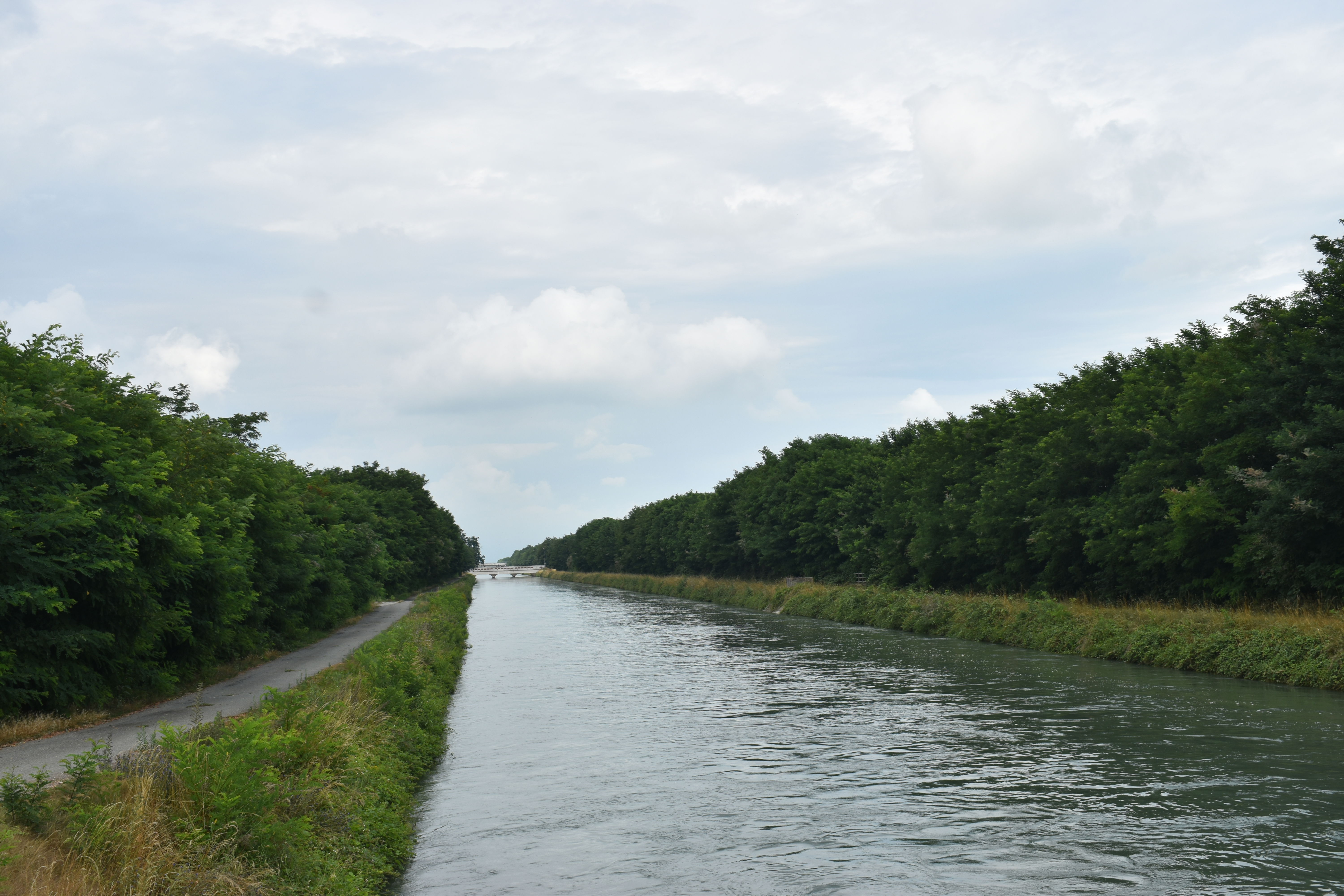
T4. The Cavour Canal- near Crova
Wherever, I was to go in the area, there was always the sound of running water in the background: Not surprisingly it is known as the Terra D’Acqua. Every so often, the canal is crossed by small bridges carrying the small roads which connect the isolated farmsteads.
After about 2 km of walking along the canal, there is a sign for Carpeneto, which was the centre of one of the larger work detachments for POWS and one of the more notorious incidents, so I set off to investigate. Australian POW Jim Wilson recalls his transfer from Gruppignano (Camp PG57) to Carpeneto:
"On 25 April 1943, a train load of us made the 15-hour journey in cattle trucks from Udine to Vercelli, and then our group of 40 marched to the small village of Carpeneto, to be billeted at a farm managed by the Peno Brothers. Carpeneto is between Milan and Turin. Here we were split into 3 groups, again, each directed to work on a different farm. Other groups of approximately 40 were sent to other farms. Here again, I worked as a blacksmith while the rest were out in the fields, not always as useful to the farmer as they were supposed to be. For this work we were paid 3 lire a day - just chits to that value, not Italian money -nowhere to spend it anyway.” 1

5. Carpeneto - site of one of the work camps of PG106 Vercelli
Carpeneto is a small village rather than a single estate. On a Sunday afternoon, it was totally deserted, although it clearly was not abandoned. While some of the properties looked noticeably derelict, elsewhere there were signs of life – occasional parked cars, washing hanging out and the smell of wood smoke. It would be difficult to say, which was the blacksmith where Jim Wilson worked or the exact buildings in which the prisoners were housed, but it probably has not changed a great deal in the last 80 years and you can get a feel for the place.
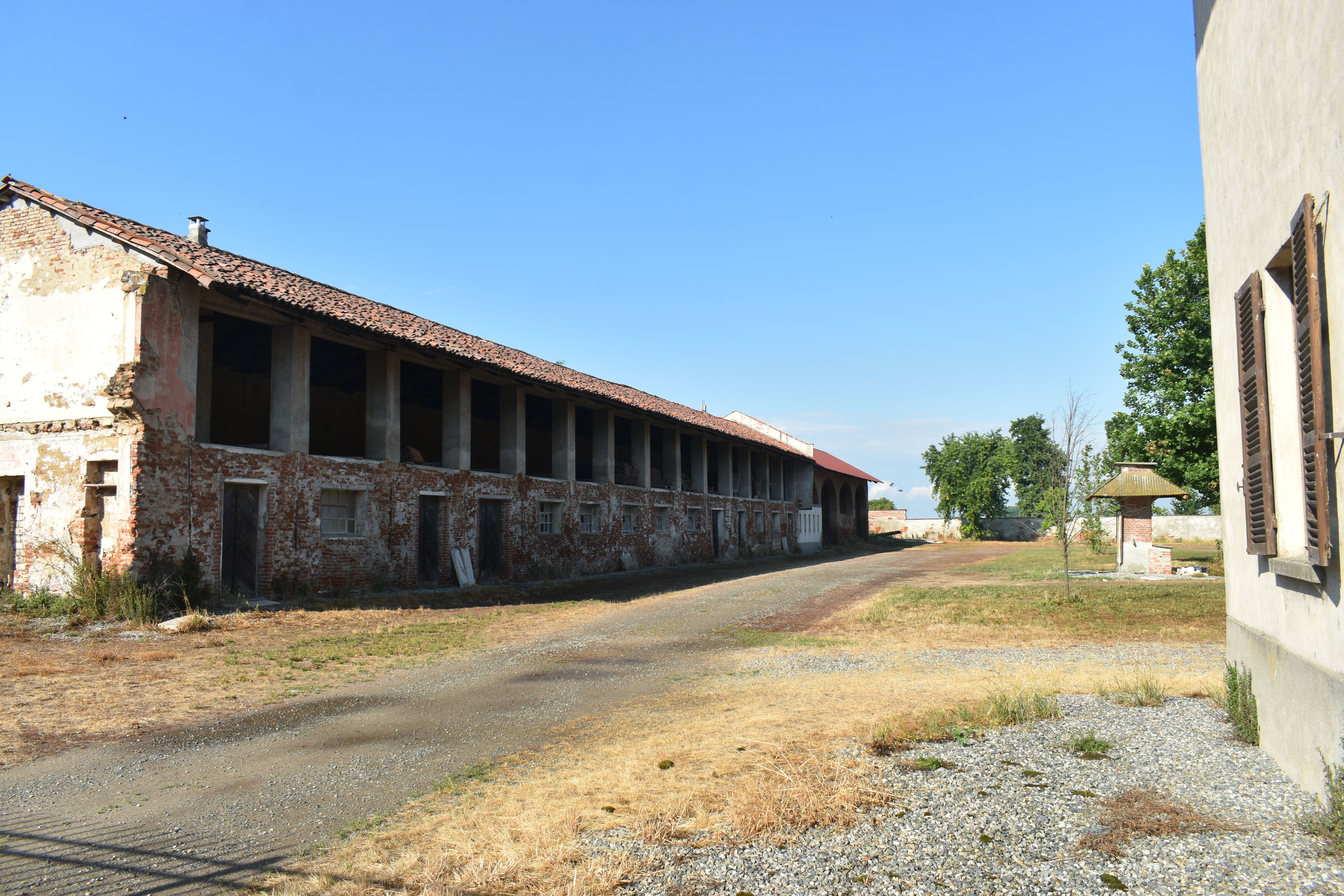
6. Typical accommodation at Carpeneto
Carpeneto was the site of one tragic incident, the killing of Australian Private John Ernest Law (NX 16597) of the 2/17th Battalion AIF, who was shot by an Italian guard on 15 June 1943. The case was later investigated as a war Crime by the British. Jim Wilson mentions of Carpeneto that.
“It was here that John "Paddles" Law of the 2/17th Inf Bn was shot whilst attempting to escape. Half-a-dozen of us were allowed to attend his funeral as pallbearers. "Titch" Messenger followed with a huge wreath he had to look through. A 2/13th Sergeant took the purple ribbon from the wreath and sent it to "Paddles" parents in Sydney.”

7.The Grave of Private JE Law ( Paddles) of the 2/17 Australia Infantry Battalion at Milan War Cemetery. Law was shot dead under suspicious circumstances at PG106- Carpaneto.
On leaving Carpeneto, I walk back up the canal towards Crova then take the road towards … I am looking for the Tenuta Foglietta. Although many of the camps are identified by name, there were also given identifying numbers by the Italians, the Tenuta Foglietta seems to be camp PG106/2. This was visited by the Swiss military Attaché, Leonardo Trippi and inspected on4 June 1943. The report of the visit held in the British National Archives( WO 224/139) The Swiss report describes Detachment PG106/2 as follows;
“The inmates of the camp are cantoned in a house built of stone, in good roomy lodgings with many windows. In three rooms there are respectively, 8, 16 and 48 sleeping accommodations. The double-tier wooden bedsteads are provided each with a straw mattress, two blankets and two bedsheets. There is electric lighting everywhere. Tables and benches outside the house are used by prisoners to mess and spend their leisure time. A room adjoining the kitchen, furnished with tables and benches, is at the disposal of the inmates of the camp when the weather is bad. “

8. Tenuta - La Foglietta
However, the report then goes to say that the prisoners were lacking in games and books to use in their leisure time, although a radio installation was available. Daily rations provided to the inmates consisted of ; 400 gms of bread; 120 g of rice or alimentary pasta ; 13 g of fat; 10 g of grated cheese; 15 g of tomato sauce; 7 g of coffee substitute; 15 g of sugar ; 50 g of legumes , 20 g of salt ; and an allowance of 1 lire to purchase fresh vegetables. The respective meat and cheese rations were 240 g and 250 g per week. Although. Some of the men judged the food was insufficient, the Swiss reckoned since it was the same as the depot rations for Italian troops, that there was no complaint to be had. Additionally, it seems that the local famers provided the men with extra food when they ate their midday lunches out in the fields.
The Swiss inspector was also at pains to stress that despite the area, the men were not actually working in the rice fields themselves.
“The prisoners of war had no complaints regarding the kind of work in which they were employed. The majority of the men are making hay, some are employed in levelling meadows and raising dams for rice plantations. No prisoner of war is employed in the rice fields”.
Another Australian POW, Ted Faulks recalled of the work;
"Our first job the next morning we started work, the farmer takes us down to a storeroom and gives us a shovel each we had to go down into this paddock and make irrigation banks to grow the rice so all day on the shovel we're all soft a hot day and hungry, not used to working for eighteen months. We plodded along all day. Gee, it was hard on the hands. Your hands get blistered, your backs got sore, and you got sunburnt. After about a week we got more used to it. They make you work hard; you've got to keep going”. 2

9. Irrigation channels to maintain
From the Swiss reports, the biggest gripes from the POWs seemed to have been that their mail was still being sent to Campo PG57 in Udine and taking weeks to arrive, the slowness in delivering Red Cross parcels and the absence of the free cigarette allocation, all of which the Swiss promised to investigate. When I was passing by La Foglietta, it was early evening, but the temperature was still around 34C. Looking out across the endless green of the rice fields, there was little or no shade out there – so one can quite imagine the sun burn, at the height of the day.
Although, the land looks extremely flat, it is deceptive. The reason for the banks of earth, is that they are small terraces. Although nowhere nearing as striking as the terraces you might see in China or Japan, each small field is itself totally flat – but it may in fact be on a slightly different level from the next field, which is also one of the reasons why the water is circulating and running everywhere, rather than stagnating. All those earth works need maintenance and the canals need clearing of vegetation to keep the waters following. Before intensive mechanisation, here was a clear division pf labour in rice cultivation between the men’s work which tended to be the building the irrigation dams an clearing the channels, and the women’s work which was the weeding, rice picking etc. With the local menfolk, otherwise engaged in the Italian Army, the Allied Prisoners of War were bought in to replace the labour and not the traditional female labour in the rice field themselves. These days, they apparently use GPS, lasers and machinery to get the rice fields totally flat, in the 1940s, it was all done by hand and eye.

10. Irrigation works
The next day, I set out in the other direction from Crova a towards Salasco and San Germanno, to look for the Tenuta Petiva, this was PG106/1, also visited by the Swiss on 4 June 1943. To get there from Crova, you have to pass by the entrance to the village of Salasco, there was a working detachment there as well, but it is difficult to see which farm it was. There is also a small castle which does not seem to be open. There was not even a bar open for a quick shot of espresso. From Salasco, you cross the A4 Motorway by bridge to see more rice fields on the other side. Of course, the A4 was not there in 1943, so you must imagine what the view to the mountains would have been like without it. On the other side of the A4 it is extremely quiet, apart from the sound of running water and the birds. An occasional tractor passes on the road, going from one set of fields to another and that is about it .
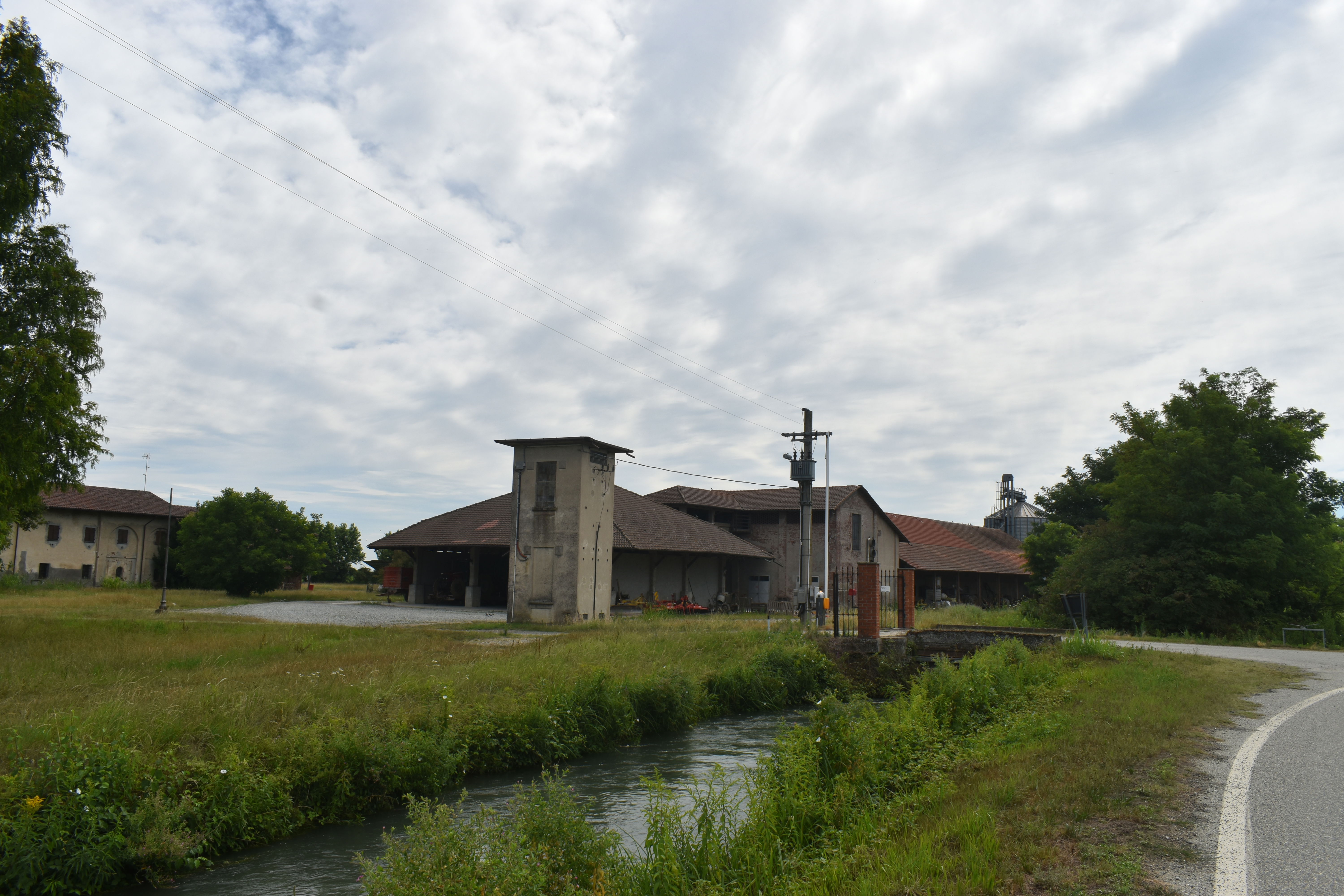
11. Tenuta Petiva

12. Rice fields near Tenuta Petiva
The Tenuta Petiva is another typical collection of agricultural building, the owners house, the warehouses and silos look like they might have been round in the 1940s, some modern processing plants and storage have been added. The number of men and the accommodation were similar at La Petiva to La Foglietta, although here they were housed in a low ceilinged attic and thought this was overcrowded. The Swiss were more concerned about the inadequacy of the sanitary facilities, which were describe as primitive “There are six water closets with direct water discharge but no shower baths or washing accommodations. The explanation was that the pipes for the water conduit had not yet arrived. We ored the necessity of having the installations completed at an early date and shall make a pertinent report to the War Ministry. The inmates of the camp wash and bathe in the meantime in one of the many water channels near the camp” Perhaps because of this, the Swiss reported their had been outbreaks of dysentery at La Petiva.
Somewhat bizarrely, the local Italian doctors attributed the outbreak, to the prisoners not covering themselves properly at night and getting cold , rather than the poor sanitation. The Italians have always had a think about draughts of air.
The Swiss Report mentions one British POW , Georges Whitfield from the Durham Light Infantry who died in a a Vercelli hospital from Bronco pneumonia on 1 June 1943.

13.The grave of George Whitfield who died in a Vercelli hospital from pneumonia. Buried at the Military Cemetery, Milan.
When the Swiss arrived at La Petiva, the men were in the middle of a strike. According to the Australian Camp Leader, MJ Worsfold, they had stopped work that morning to protest the absence of Red Cross parcels and cigarettes; the lack of credit notes for work carried out, overcrowding and inadequate medical facilities. After a bit of intermediation by the Swiss the men agreed to go back to work, and the Italian Commandant promised that nobody would be punished because of the morning’s withdrawal of labour.
Having passed through La Petiva, it is another three or four km to San Germanno, which is the only reasonably sized settlement in the area. At least there is a café there to take on refreshments. San Germanno is on the route of the via Francigena, the 2000km pilgrimage route from Canterbury to Rome via the Great Saint Bernard Pass. At least after the mountainous bits, this piece is flat and should allow a bit of recovery time. There is sign for a pilgrims hostel . I don’t see any pilgrims, or anybody else who looks like a tourist, but maybe it’s a bit earlier in the day. If you are in the area, San Germanno is one of the few places where you might be able to stock up on food and refreshments; it also had the only ATM, I ever saw working in the area. Having done a short stretch of the via Francigena I reached the Cavour Canal again– this time going south to Crova, completing a circular route from Crova to San Germanno and back again.
There was still one more road out of Crova to explore to reach the last two former work detachments in the area Oschiena and La Veneria. La Veneria is huge you can see if from miles away, on the plain, on a hot morning, it seemed like a mirage it was always on the horizon, the further I walked I never seemed to get there. La Veneria is attributed as being camp PG106/6 referred to in the Swiss report (although sometimes they refer to it as being PG106/7 just to be confusing). Not surprisingly, La Veneria seems tp he been one of the best-appointed camps in the area.

14. La Veneria with the rice fields
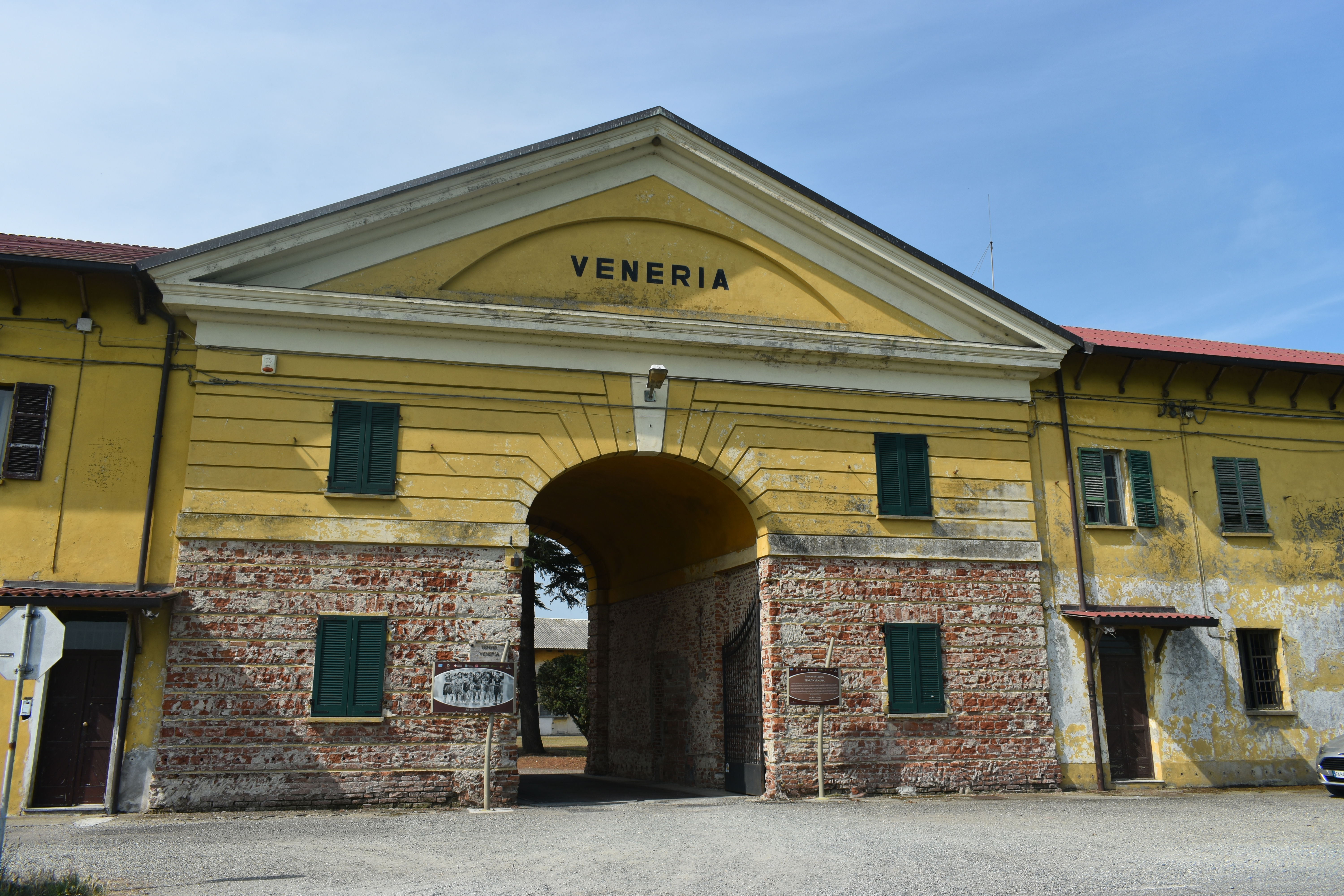
15. La Veneria
Cascina Veneria started to be used as a rice mill around 1400 thanks to the Cistercian monks. It is one of a series of granges or "granaries” to be found in the rice growing area. Granges were traditional houses and farming centres in which the lay brothers, Cistercian monks who had abandoned their monastery. The fulcrum of the granges, on the strip of land stretching between Trino, Crescentino and Larizzate, was the Abbey of Santa Maria of Lucedio: founded in 1123. It immediately acquired numerous estates, each of which was managed by a grange. The granges represented a specific instrument in the process to transform an area which, up until the year 1000 had been wild, into arable land: when a landowner intended to transform his estates to make them productive, the abbots sent one of their monks, the granger, who directed the improvement works until the task was completed. Lucedio Abbey possessed six granges: Montarolo, Montarucco, Leri-Cavour, Castelmerlino, Ramezzana and Darola. The Cascina Veneria was originally run by the “Ordine degli Umiliati di Santo Stefano di Vercelli” from 1209 until their dissolution in 1571. After the monks it had several different owners, in 1937 it was acquired by the state run IFI, Istituto Finanziario Industriale, chaired by Senator Giovanni Agnelli, under which it became a model for the surrounding territory.
As mentioned above, the Australian and other prisoners of war, were not directly employed in the rice cultivation. This was largely female work, but it also required a certain amount of knowledge and experience. Australian POW Ted Kent recalled the arrival of the specialist female worker in the rice field for the transplantation of the rice plants and the manual weeding work.
"When they'd cut and ploughed the paddock, they'd flood it with water and there was a gang of girls, about fifty girls- teenagers - early twenties - they'd come up and they were rice packers. They'd come, riding their bikes around, they'd plant the rice. They'd grow the rice thick somewhere else, and then they'd cart it over to this paddy and shove it in bundles about as big as that in the water along the headland. These girls would pick up a bundle, have to plant it in the water like that, up to their knees in the water all day. They'd be singing away happy as anything - of course they didn't know much better - and we'd come along with our pitchforks and shovels or whatever and they'd give us cheek 'cause they knew we were harmless.”
This was the female world of the Monda, with the workers being known as Mondine. In May each year female workers arrived from other parts of Italy ( specifically in the North from Lombardy, Veneto and Emilia Romagna – but also from, parts further south as well) . There work consisted of transplanting the rice plants into the paddy fields and then the monda (mundè in Piemontese dialect), the cleaning of the plants.

16. The world of the Mondine
The Mondine were almost all young women, some as young as thirteen, from poorer socio-economic backgrounds. Although there were also even older women aged 70 and over among them. They were picked up in old trains, the same one that normally transported cattle, to stations near the rice fields. On arrival they were loaded divided into small in groups of six or seven and taken to one of the many farms scattered among the rice fields. They slept in grain stores emptied of grain, in large rooms with very high ceilings, with the beds stacked next to each other obtained by putting together a few wooden boards and a bit of straw. The sheds could hold up to 60 girls. All around the bed were strings of rope to which clothes leaned to create a semblance of privacy. The owner, before settling them in the farmhouse, made sure that the girls did not know each other and did not come from the same place: by forming groups of strangers, they thought that they were more likely to avoid avoiding strikes or reprisals, ignoring that in reality the sufferings were common to all and that there was a tremendous sense of solidarity among the female workers whether they knew each other or not.
At 4:30 every morning the foreman gave the alarm. This was followed by a quick wash in the cold water of the canal, the ditch near the farmhouse where the dishes would also be washed. Few men were involved they were mainly "horsemen", at most four or five for every fifty women. After waking it might be a Half an hour's walk to reach the flooded rice fields. Some of the women were loaded on tractors, but since the master then deducted the travel expenses from his pay, most preferred to walk. Here began the working day that lasted twelve hours, with a half-hour break for a meal. The rice fields were divided into "squares" and the workers arranged themselves in parallel rows. They worked barefoot with their skirts or trousers were cut and rolled up above the knee, their arms were wrapped in a shirt that was fastened with a thread of twine to protect the skin from the water animals and from the rice itself, which rasped and cut with its ears. The Mondine wore large straw hats to protect themselves from the hot days and spread a very heavy ointment on the skin that made them sweat but at least prevented sun burn. Bent double, with water up to the knees they worked for 12 hours eradicating the weeds from the precious rice plants. The weeds were collected in bunches, and passed from hand to hand from the center of each row to the ends , and then thrown into the side gutters, shouting “grass, grass”. The mondine worked without tools mostly, pulling the weeds by hand. Some herbs were large and sharp, difficult to tear, and sometimes it was necessary to ask for the intervention of men with a special tool. For the transplanting of the new plants these were thrown by the horsemen to the women for planting. The water there was full of various nasties: leeches that clung to the skin making it bleed, snakes, which the bravest grabbed by the head to throw them away, water rats; and above all mosquitoes, which raged on the delicate and already battered skin and sometimes brought fever. And then the frogs, which some put in their pockets and in the evening, when the pangs of hunger were felt, they were cooked on the fire. Some women were struck by what was called "rice fever", an acute infectious disease caused by a parasite present in the water. At typical account of a Mondina is;
“The workers were divided into groups of about ten people. There were no tools, but we used our hands. Since the rice fields were far away, we reached them by bus and, when we were in the countryside, we went to the fields with tractors. Our reward was the salary: in 60 days we earned the equivalent of € 1000 - € 1500. The environment was unhealthy, because people worked in the water and among insects. There were gadflies and mosquitoes that could cause infections by biting. Water snakes and spiders also lived in the rice fields, and in the event of an accident, the sick were taken to the owners' farms. We had lunch on the embankment of the rice fields, but there were no sleeping facilities. There was no longer a day away from the village and the separation was hard, because they had to leave the children at home. The working hours lasted from 5.00 am to 2.30 pm: they were very heavy, especially for young girls, who had to stay for many hours with their back bent, sometimes even in the rain. To relieve fatigue, women and men sang or recited popular nursery rhymes in dialect. Work was best tolerated by men, who sometimes helped women. Each paddy field belonged to a different owner, who often supervised the work in the fields. It could happen that someone got hurt and it was in these cases that the owner gave hospitality in his farmhouse. "

17. Rice fields near Oschiena
The world of the Mondine is evocatively portrayed in the classic 1949 film Riso Amaro by Giuseppe De Santis. Large parts of the film were actually filmed on location at La Veneria and it is well wort watching to get a felling for the usurious work that the women were doing , and also for the sense of solidarity between them. Today the Veneria estate is the largest single body rice estate in Europe, covering more than 700 hectares of rice fields. Each year only 550 of the 700 hectares are cultivated because it’s adopted the crop rotation to have the best quality of each type of rice: Carnaroli, Vialone Nano, Ballila and aromatic Gange.
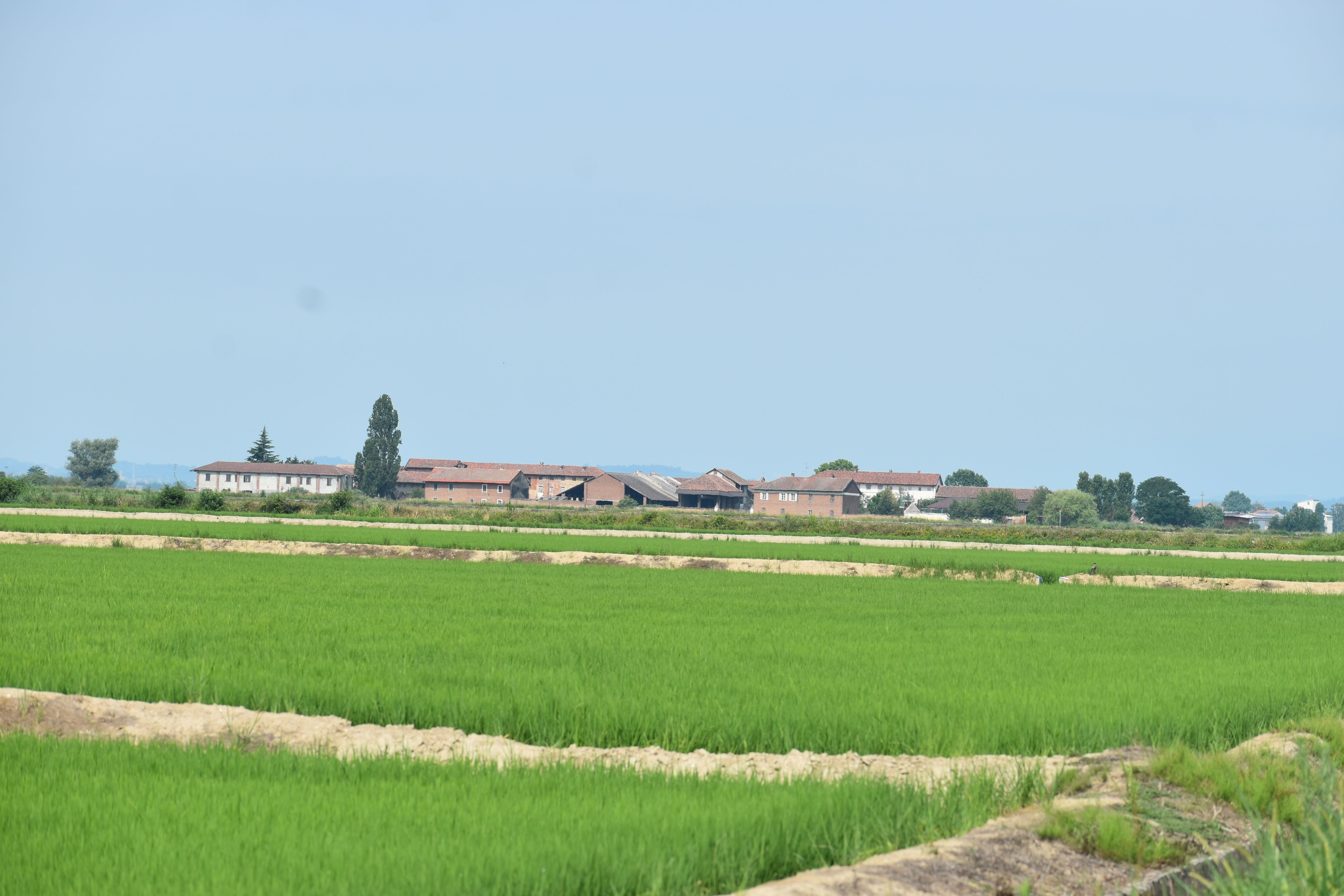
18. Oschiena
On the road back from La Veneria to Crova, you also pass by Oschiena which is where another Australian Malcom Webster was imprisoned. It now sells biological/ organic rice and houses a nature reserve, Unfortunately the farm shop did not appear to be open, when I passed by so I am having to order my rice on line. This was probably fortunate, since the day was getting hotter and hotter, my water supply was low to non-existent and it probably would not have been a good idea to attempt to carry several kilos of rice ,on the six or seven km walk back to Crova, Although the Swiss report doesn’t mention it , not surprisingly because of all the eater around the area was plagued by Malaria. The Australian POWS Certainly suffered ;
“In this area, malaria fever was endemic, and the mosquitoes were there in plague proportions. I think I was the first one to go down with malaria fever, but others soon followed. In this camp was a corporal, Wally Mills, of the 2/28th and he diagnosed us of having malaria. Phil Loffman and Wally Mills then convinced the Italian officer in charge of the camp, that we needed urgent hospital treatment. As a result, we were taken to Vercelli "Ospedale". On arrival at the hospital, we were put in a wing that was for military personnel which included POW's as well as Italian "Soldati” (soldiers). There were other POW there, mainly with malaria, but we were kept in a separate ward from the Italians. There was a 24-hour guard on us. They were quite friendly to us and gave us news of the progress of the Allied Forces in Southern Italy and quite freely told us that they wished the "Americanos" (Americans) would hurry up and chase the "Tedeschi" (Germans) out of Italy. This was about June 1943. The treatment at the hospital was dispensed mainly by nuns who were very efficient and sympathetic towards us. We were given large doses of quinine tablets and injections. After about 3 weeks I was discharged and taken back to the Brianco camp. I still had re-occurrences occasionally until 1946. “
The ANZAC , British and South African POWS were not in Vercelli for long . On 13 May 1943, the remaining German and Italian forces holding out in Tunisia surrendered. Allied forces invaded Sicily on 10 July and prepared to land on the Italian mainland. On 25 July 1943 " the Grand Council of Fascism (Gran Consiglio del Fascismo), voted to restore direct control of politics to the King, Mussolini was dismissed as prime minister and arrested. Hitler sent several divisions south of the Alps, officially to help defend Italy from Allied landings but really to control the country. Three Italian generals (including Brigade General Giuseppe Castellano) were separately sent to Lisbon to contact Allied diplomats. Castellano spoke with the Allies to set the conditions for the surrender of Italy. On 1 September Castellano appeared before the King, who decided to accept the armistice conditions. A confirmation telegram was sent to the Allies. The message, however, was intercepted by the Wehrmacht (the German armed forces), which had long since begun to suspect that Italy was seeking a separate armistice., Operation Achse, to take control of Italy as soon as the Italian government had switched allegiance to the Allies. On 3 September, in an olive grove near Cassible in Sicily Castellano and Bedell Smith signed the accepted text on behalf of Badoglio and General Eisenhower, respectively. When the armistice was announced by Allied radio on the afternoon of 8 September, German forces immediately attacked Italian forces. For some inexplicable reason, Allied Prisoners were told to remain in their camps following the armistice and await liberation. Most of the camps were then promptly occupied by the Germans and their ordeal of captivity continued. However, in the loosely guarded Vercelli Camps most of the prisoners were able to simply walk off into the hills - which is another story.

19. Freedom was beyond the mountains
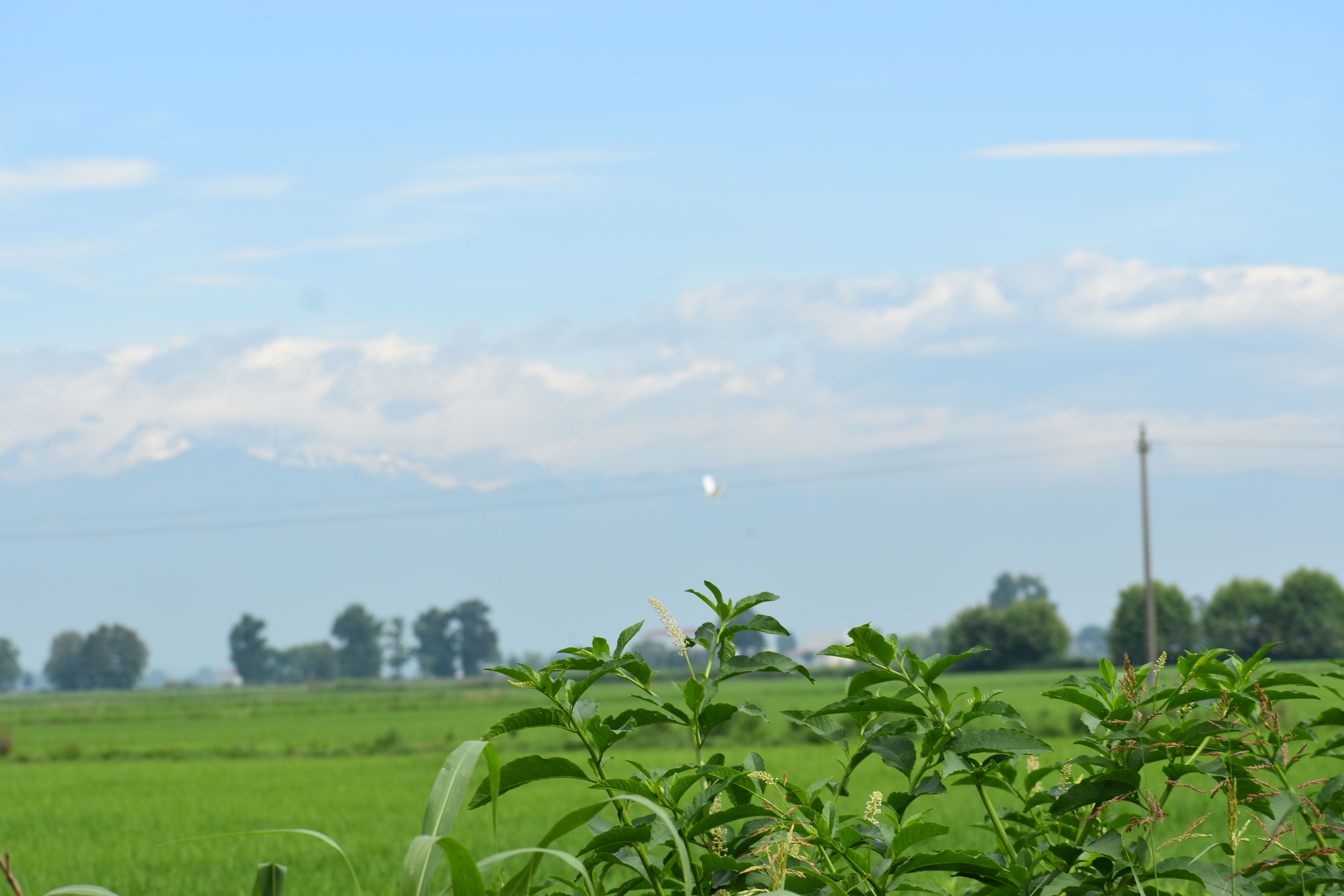
20. After the armistice - freedom was in Switzerland
Tourism
Rail travel to the Vercelli area is ok. Trains run from Milano Centrale via Novara. The easiest stop for Crova is Tronzano Vercellese, but it is still a3km walk. Public transport is rare. Probably a car is a better bet. Alternatively cycling between sites would be easier, but bicycle hire is difficult. Train times at:
To stay in Crova
MI CASITA - Minicase in affitto a Crova, Piemonte, Italia (airbnb.it)
To eat in Crova
Trattoria La Scaletta Crova - Home - Crova - Menù, prezzi, recensioni dei ristoranti | Facebook ù
There are some more restaurants and a Supermarket in Tronzano
Rice producers
La Veneria
Oschiena
Cascina Oschiena produzione e vendita di riso Crova Vercelli
Acknowledgements
The full story of ANZAC Pows in Italy can be found on the excellent site. Anzac Freemen in Europe which is an invaluable resource.
Welcome Letter | ANZAC POW Free Men in Europe
With thanks to Ruth Bloom for the research at the PRO Kew